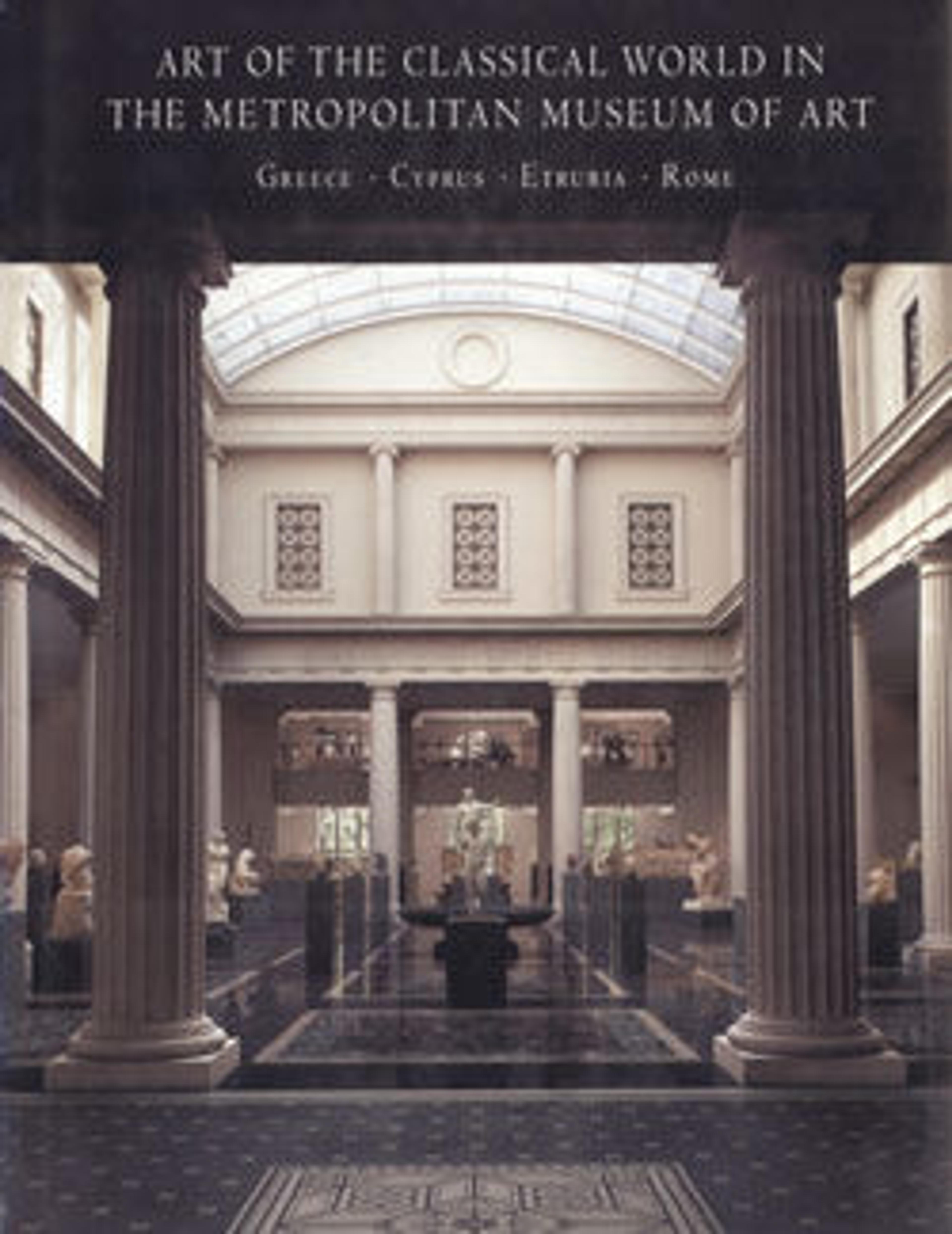Terracotta lekythos (oil flask)
Upper zone, uncertain scene: chariot surrounded by men and women
Middle zone, Achilles mourning Patroklos, and Nereids bringing Achilles' second set of armor
Lower zone, Amazonomachy (battle of Greeks against Amazons)
This lekythos is of exceptional novelty and beauty. The unusually large shape is subdivided into three zones, each with a mythological subject. The middle zone features Thetis and her sister Nereids bringing armor to replace the set that Achilles had given Patroklos. The lower zone depicts Theseus and Hippolyte in combat among Greeks and Amazons. In both cases, the subject concerns a woman in martial mode and a warrior. The uppermost scene has been interpreted as the abduction of Persephone but more likely shows a god (or goddess) departing on a mission of divine intervention. The placement of the white-ground zone between two in red-figure emphasizes the Eretria Painter's extraordinary draftsmanship. It may also indicate the funerary purpose of the vase.
Middle zone, Achilles mourning Patroklos, and Nereids bringing Achilles' second set of armor
Lower zone, Amazonomachy (battle of Greeks against Amazons)
This lekythos is of exceptional novelty and beauty. The unusually large shape is subdivided into three zones, each with a mythological subject. The middle zone features Thetis and her sister Nereids bringing armor to replace the set that Achilles had given Patroklos. The lower zone depicts Theseus and Hippolyte in combat among Greeks and Amazons. In both cases, the subject concerns a woman in martial mode and a warrior. The uppermost scene has been interpreted as the abduction of Persephone but more likely shows a god (or goddess) departing on a mission of divine intervention. The placement of the white-ground zone between two in red-figure emphasizes the Eretria Painter's extraordinary draftsmanship. It may also indicate the funerary purpose of the vase.
Artwork Details
- Title:Terracotta lekythos (oil flask)
- Artist:Attributed to the Eretria Painter
- Period:Classical
- Date:ca. 420 BCE
- Culture:Greek, Attic
- Medium:Terracotta; red-figure, white-ground
- Dimensions:H. 19 1/2 in. (49.5 cm); diameter 8 1/16 in. (20.5 cm)
- Classification:Vases
- Credit Line:Rogers Fund, 1931
- Object Number:31.11.13
- Curatorial Department: Greek and Roman Art
More Artwork
Research Resources
The Met provides unparalleled resources for research and welcomes an international community of students and scholars. The Met's Open Access API is where creators and researchers can connect to the The Met collection. Open Access data and public domain images are available for unrestricted commercial and noncommercial use without permission or fee.
To request images under copyright and other restrictions, please use this Image Request form.
Feedback
We continue to research and examine historical and cultural context for objects in The Met collection. If you have comments or questions about this object record, please contact us using the form below. The Museum looks forward to receiving your comments.
